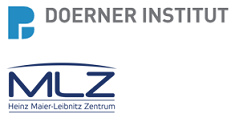Speaker
Description
The production of “Nuragic” Bronze Figurines from Sardinia represents a rich historical archive that provides key information about the iconography, the metal production and casting techniques, and on the development of metallurgy in the Mediterranean basin. Since the question about their manufacturing method still remains without definitive answer, the understanding of the Sardinian bronze metallurgy is essential to determine which manufacturing techniques were employed for the production of complex bronze artefacts. For example, complex bronze sculptures, made using lost wax technique, were rarely cast in a single solution: most of the parts of the wax model were moulded separately and then joined, as can be inferred also from a simple visual inspection. This work is devoted to the identification of metallurgical procedures applied to the production of bronze artefacts of the “Nuragic” Period in Sardinia. We analysed a set of six artefacts, three anthropomorphic statues (a warrior, a priestess and an offering figure), one miniature of a basket, one boat model and several bronze weapons; all of them appear outstanding concerning the accuracy of their manufacture, the originality of the subjects and the descriptive details. The samples were made available by Museo Nazionale Preistorico “L. Pigorini” and by the Sassari Archaeological Survey Office. The analyses were performed using neutron tomography (NT) and Bragg Edge Neutron Transmission (BENT) at the Paul Scherrer Institut (PSI) and ISIS. NT allowed to acquire a full 3D volume reconstruction of the statues, thus obtaining important details about casting procedure and connection among the different components. BENT provided Cu-Sn alloy composition analysis and details about the microstructure. NT allowed to acquire a full 3D volume reconstruction of the samples, thus obtaining important details about casting procedure and connection among the different components. This analysis allowed us to highlight morphological details as well as microstructural information, making possible the identification of casting and finishing processes (Fig.1).All the results were obtained in a totally non-invasive way.

